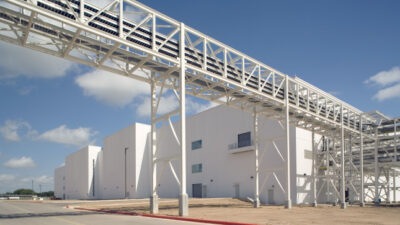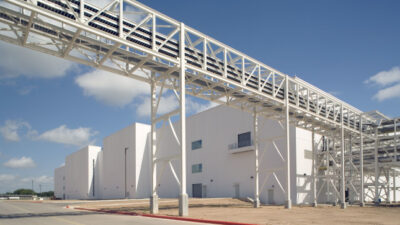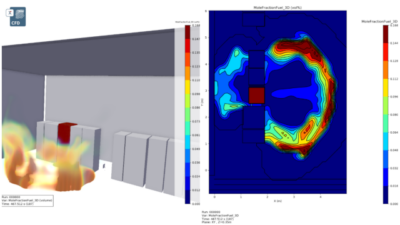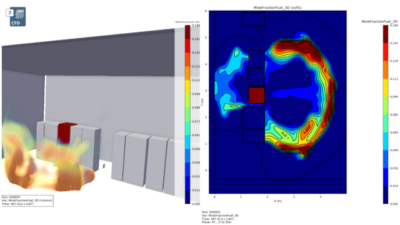In extreme situations, tap boxes can be used as a cost-effective, efficient solution to restore power to buildings and businesses without sacrificing security or anything that might hamper operations.
In a perfect world, electrical energy would be cheap, plentiful, clean, always available, and uninterrupted. While that is unrealistic, there are various technologies available to improve the quality and reliability of your power. A generator could also be installed to back up power in the event of a long-term outage. However, a permanent generator and the annual maintenance expenses may not fit your budget. In many cases, especially if the building is leased, it is difficult to justify a permanent generator. It can also be difficult and costly to retrofit an existing building.
A common alternative would be to rent a temporary/portable generator in the middle of a crisis, usually at a time when things are disorganized and hectic. Common issues that need to be addressed before ordering a portable generator are voltage, KW size needed (or load size), length of cable to run from load to generator, and so on. Once on-site, a decision needs to be made to determine the critical loads to restore, and an electrician must connect the temporary power to the building’s electrical service or distribution system. This can take several hours and is costly, particularly with after-hours labor working at time and a half or even double time. This may also present a potential hazard with cables running down hallways. It is also a security risk because doors are left open so the cables can connect to the portable generator from the outside.
A more efficient and practical alternative is to make the facility “generator ready.” With the installation of a transfer switch and the generator quick connect tap box, a facility can be up and running within 10 minutes of the arrival of the temporary generator. In addition, as part of the process of the installation of the tap box, all the key questions about sizing, voltage, critical loads, generator location, and cable length are predetermined.
For example, a Chicago-based grocery store chain had several sites that were especially vulnerable to power outages due to their location and an aging electrical infrastructure. In June and July of this year, several stores suffered multiple power outages. Some lasted as long as three days. The store stood to lose not only the cold and freezer sections of the store, but also the revenue for the other nonperishable items because without power, the store was closed. The grocery store was able to summon portable power that arrived within the 4-hour “critical window,” but the cost of the emergency electrical work, plus the extra time needed to tie in the generator, was in excess of $4,000, not including the cost of the rental generator. One store in particular experienced three outages in 10 days, each time requiring an emergency response from its local electrical contractor.
The following example compares three possible situations when a 100-KW diesel generator is required: a permanent generator, an emergency response rental, and a preplanned generator tap box.
Permanent Emergency Response Tap Box
Purchase & installation $50,000 0 $9-11,000
Annual maintenance $1800 0 0
Annual fuel cost for weekly $500 0 0
exercising
Emergency response electrician
labor to tie in temporary power* 0 $3,000-4,500 minimal
Power up time** <10 seconds 3 hours + 10 minutes
* Does not include rental cost of temporary generator
** Does not include delivery time of rental generator
Although the estimates above vary by site and specific application, they illustrate how cost effective it is to restore power quickly after an outage. Most likely, the installation of the tap box configuration will more than pay for itself the second time it is used to restore power. The building’s integrity is not compromised and remains secure. In many cases, the facility owner’s maintenance person or the technician delivering the generator can make the connections and restore the power. Everything is preplanned and prewired, and procedures are in place for such an emergency. In the future, if a permanent generator is ever required, a large portion of the work and expense is already done and paid for.
All businesses should have a disaster recovery plan. In fact, publicly traded companies are required under the Sarbanes-Oxley Act to be able to secure their documents and records while maintaining internal control of data and processes. Having a power backup plan is essential to meet the intent of this requirement. It is important for a business to have a contingency plan to resume operations even with the lack of electricity in order to save data, preserve perishable items, and ensure security and communication capability.
Kevin McGowan has been the sales manager for Steiner Power Systems/a Division of Steiner Electric since joining the company in 2004. He has worked in the power industry for more than 30 years, specializing in power quality and power generation. He holds a bachelor’s degree in business and an MBA from Eastern Illinois University.



